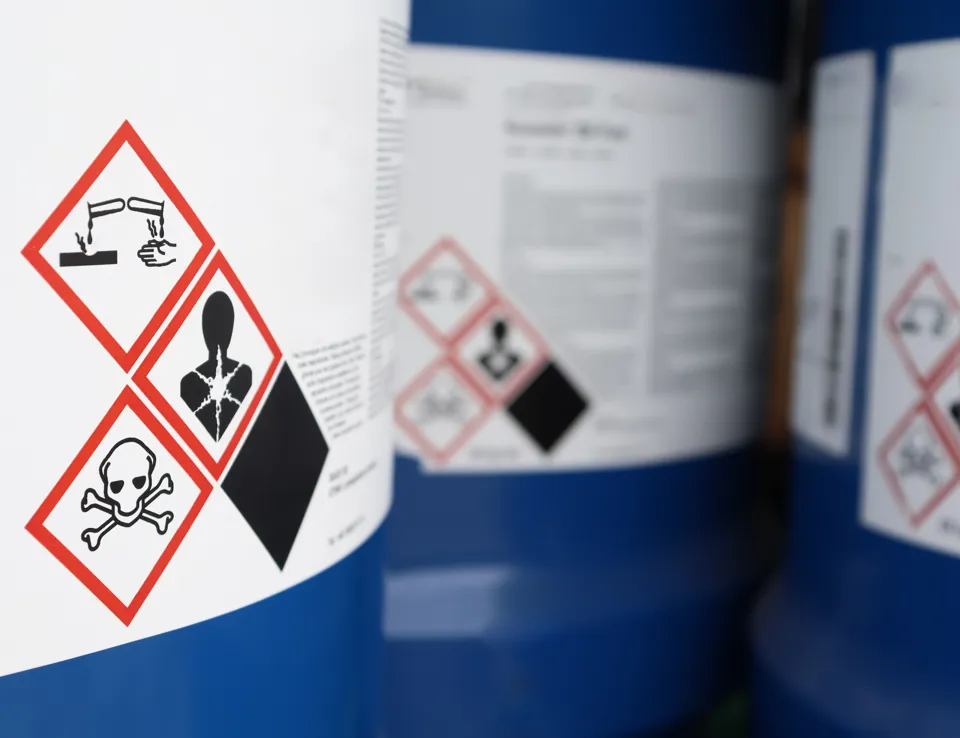
Chemical emergency response - stories from our helpline
15 May 2023
Ricardo's chemical experts operate an emergency response helpline that operates 365 days a year, 24/7, providing an uninterrupted, reliable service.
We provide specialist 24/7 helplines, software and advice to help you comply with chemical safety regulations and mitigate risks to your organisation and supply chain. Our tailored services and global reach help you safeguard your business operations and protect your bottom-line.
Accessed through a network of international telephone numbers and local language speakers, this service helps organisations operating in the chemical sector to comply with the complexity of international chemical safety regulations. Our team mitigate impacts to people, the environment, assets and reputation, and provide a consistently high quality of response and transparency across global organisations.
To highlight the incredible work that our chemical emergency response team does around the clock, we've chosen a few calls and stories to share.
Lunch Bell

Our emergency response (ER) team was called by the fire and rescue services (FRS) as part of our national role as the National Chemical Emergency Centre (NCEC) following carbon monoxide alarms being triggered at a house. Their initial investigations found no obvious source of the gas, until a self-heating meal was brought close to their monitoring equipment. This immediately triggered a warning of carbon monoxide being present. Our emergency responders were called to investigate the potential release of carbon monoxide from this type of meal.
From our initial research, we identified a range of reactants used in different brands and types of self-heating meals, including one possible reaction that would have had the potential to generate carbon monoxide – although this could not have been the main reaction pathway. As more information became available, the exact brand and type of meal was discovered and this helped us to understand that the actual reaction came from a powdered metal with water, which had generated hydrogen. It is known that hydrogen can interfere with the accurate measurement of carbon monoxide levels in certain types of monitoring equipment and so it was possible that the hydrogen released from the self-heating meal was the hydrogen that had been detected.
Information on the hazards of both gases was provided, along with the importance of good ventilation, and it was recommended that the monitoring equipment was checked for readings of carbon monoxide after the meal had been removed. We also advised that any future triggering of carbon monoxide alarms in the house should be taken very seriously and investigated further due to the high level of hazard.
Fentanyl discovery

There has been an increase in the number of calls to our emergency response team regarding the illicit drug fentanyl. This opioid has a potency fifty to a hundred times greater than that of morphine and is often cut with heroin to increase the heroin’s strength. Due to its rise in popularity, and involvement in some overdoses that have attracted media attention, fentanyl has become a major concern for emergency services across the globe.
Emergency service personnel discovered a plastic bag containing around 10kg of white powder, which they had reason to believe was fentanyl. They contacted us for advice about the precautions they would need to take while examining the contents of the plastic bag and what to do if there was a spill of the powder.
Our ER told the caller how to determine if the powder was fentanyl. Information was provided on what to look out for if someone is exposed to fentanyl and the first aid treatment to be carried out. Advice was also provided about the equipment that would be necessary to deal with any spillage. The caller was happy to relay this to the relevant parties and was confident in what they would be doing going forward.
Chemical spill clean-up

Hydrofluoric acid is extremely hazardous and can produce toxic and corrosive vapours. Consequently, its use is strictly regulated in industry. Incidents involving hydrofluoric acid often require the involvement of the emergency services and it is not uncommon for our emergency response team to receive multiple calls from different organisations dealing with these incidents.
We initially received a call from a member of staff at a freight depot regarding an incident involving a product containing hydrofluoric acid and nitric acid that had leaked from an intermediate bulk container inside a shipping container. Our ER provided depot staff with advice on the hazards of the product.
After the FRS arrived, we then received a call from the fire officer in charge of the incident to discuss remediation tactics. We provided contact details for companies that would be able to attend the scene and clean up the spill. We were also contacted by the spill remediation company after they arrived at the scene and we supplied them with specific product information, which enabled them to carry out a risk assessment prior to cleaning up the spill.




 Follow Ricardo plc for regular updates
Follow Ricardo plc for regular updates




